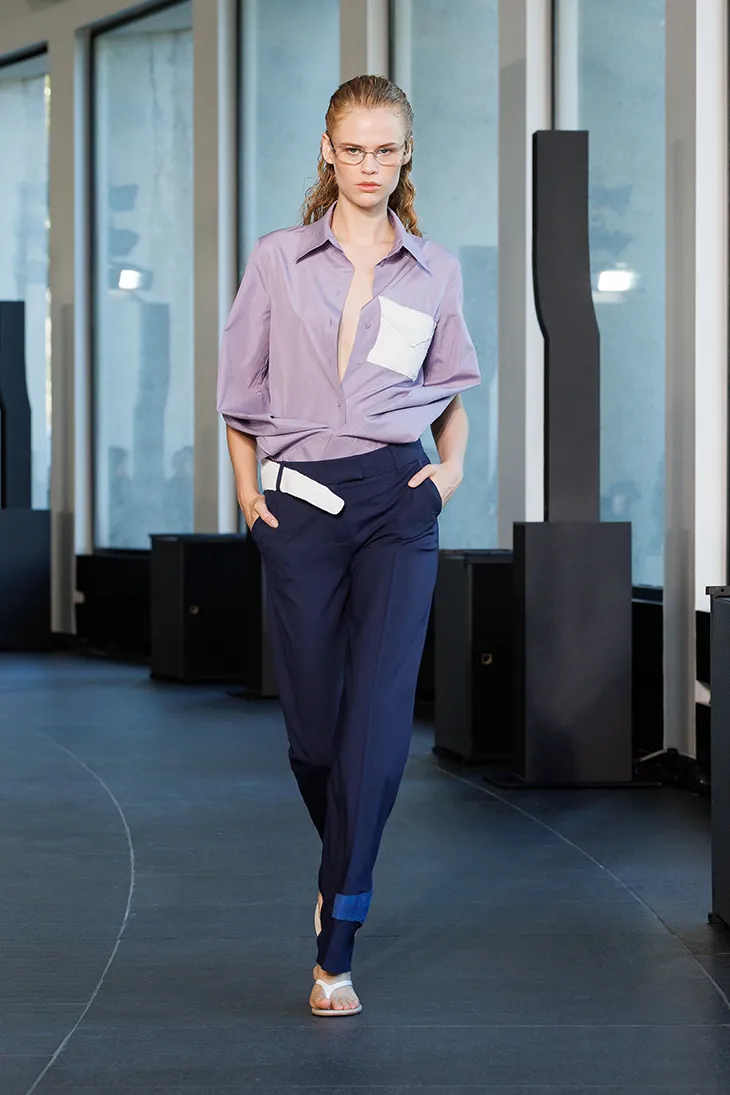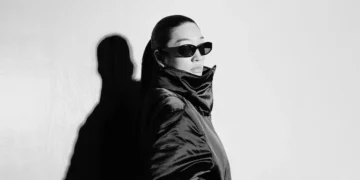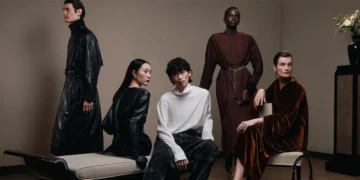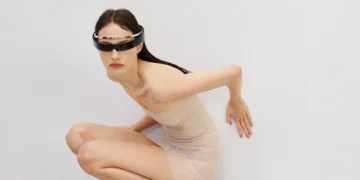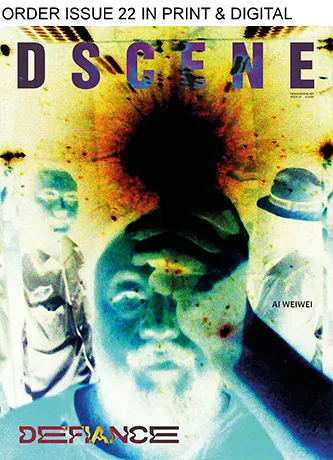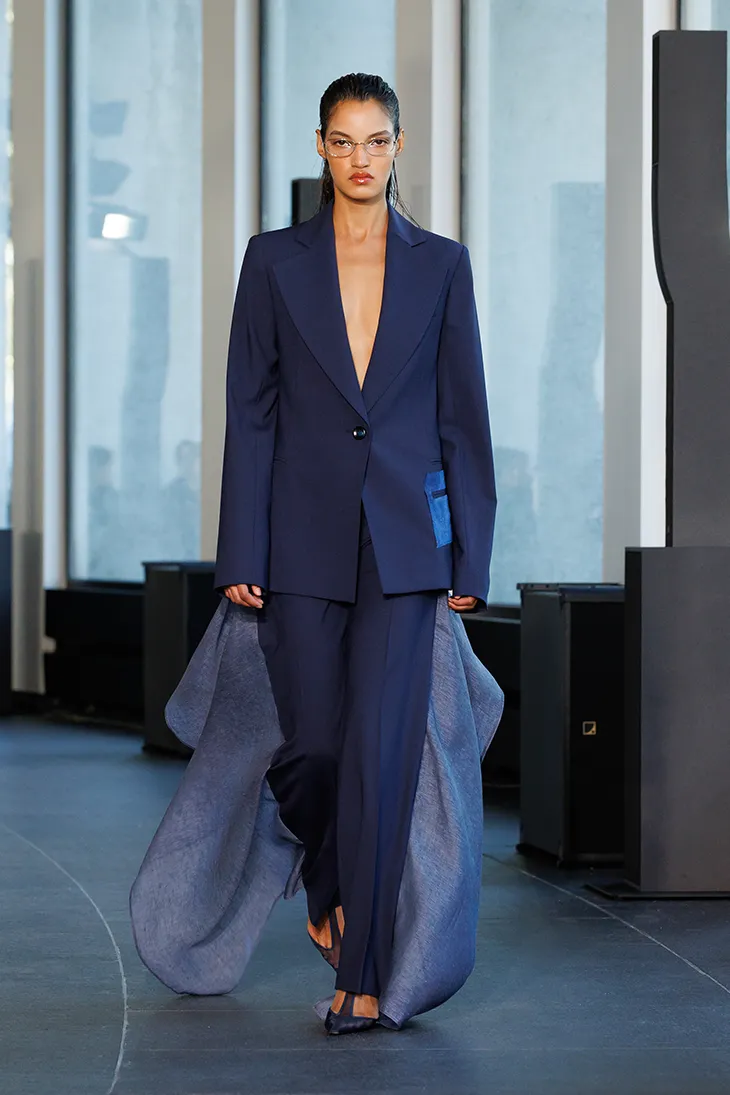
Christopher Esber presented his Spring Summer 2026 collection at the Australian Embassy in Paris, as part of the official Paris Fashion Week calendar. The choice of venue carried symbolic weight: the embassy is a modernist building designed by Harry Seidler with contributions from Marcel Breuer and Pier Luigi Nervi. Its structural precision and geometric balance mirrored the designer’s instinct for rigor and control.
The collection drew on the idea of paradise as a place that fails to match expectation. Esber framed the season around the sensation of arrival – when longed-for perfection dissolves into raw reality. Wind, heat, and shifting conditions shaped the mood, with fabric clinging or billowing unpredictably, reinforcing the tension between desire and lived experience.
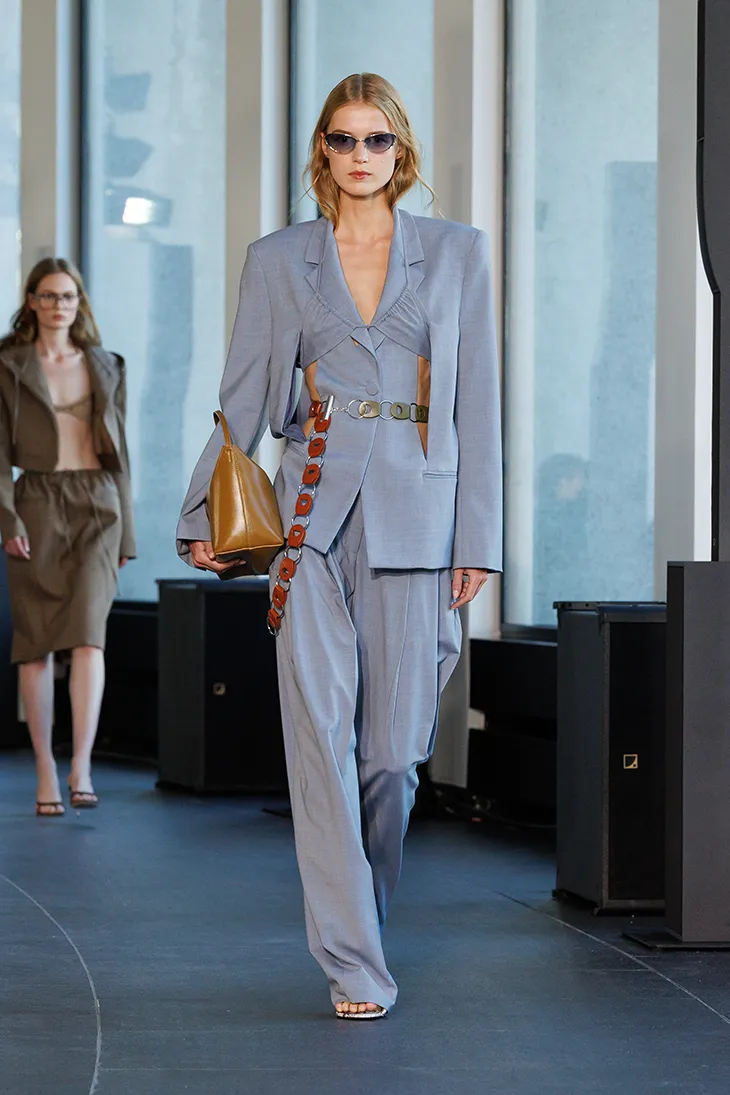
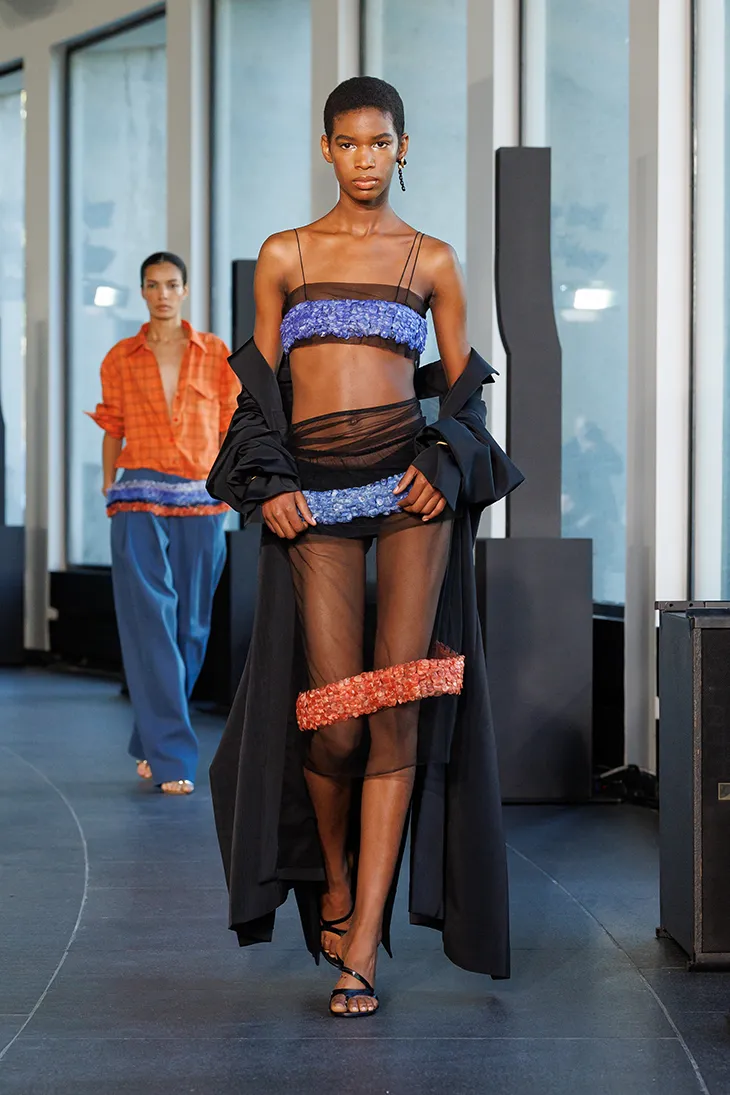
Gestures borrowed from beachwear informed many looks. A T-shirt tucked into a bikini and a towel folded into a brief suggested the immediacy of dressing against the elements. These casual improvisations became studies in construction, as drapery and structure emerged through spontaneous interaction with the body. Wind chimes threaded through hems and panels caught the air, turning movement into sound.
Esber also looked to the work of artist John Kacere, known for nude figures wrapped and draped in cloth. His fascination with fabric in motion, thrown, slipping, or gathered, translated into dresses and separates shaped by fluid architecture. Fabrics appeared as if caught mid-shift, suggesting both fragility and control.
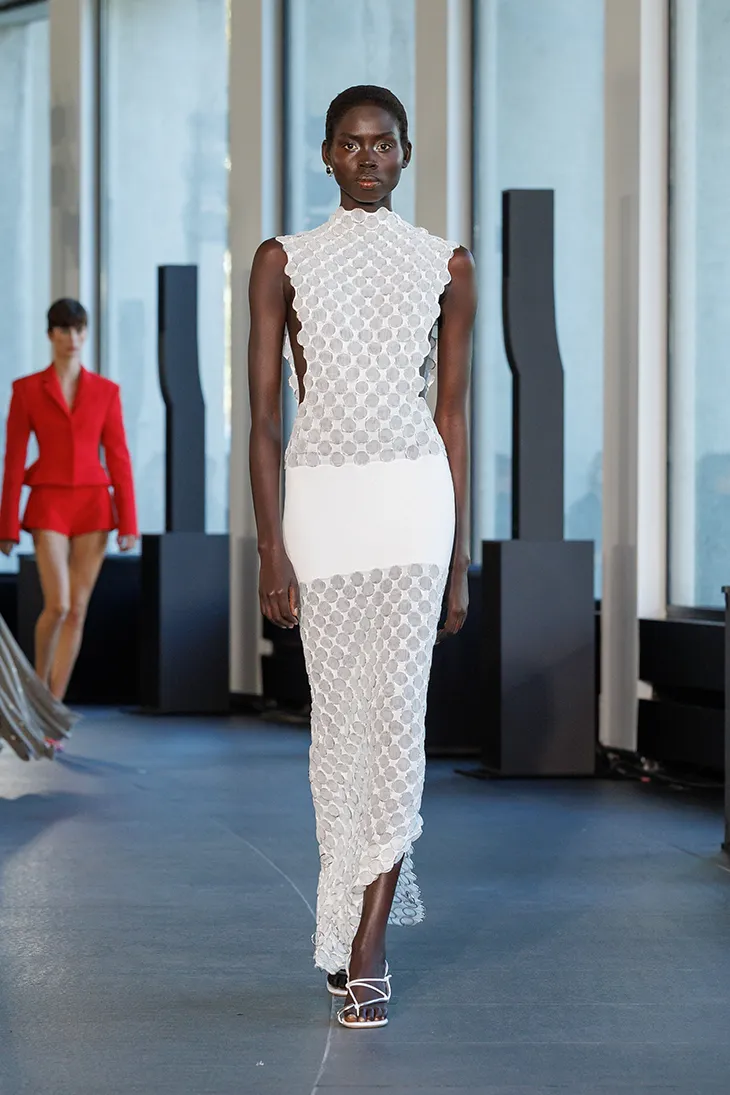
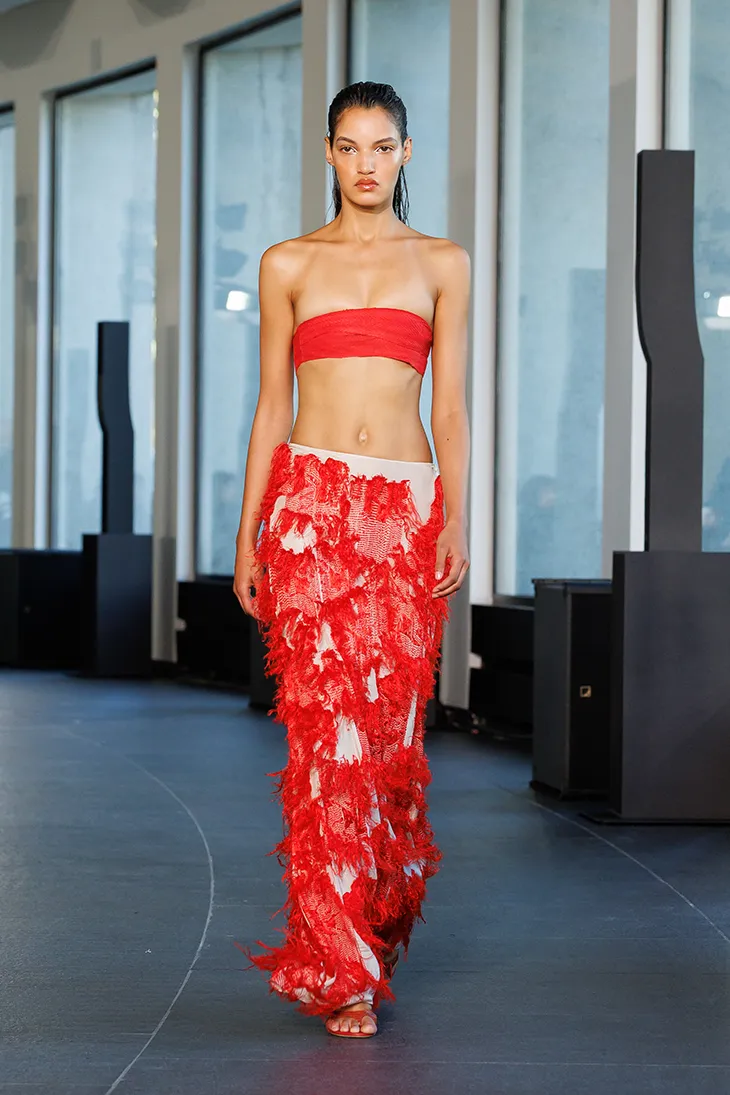
Natural elements were transformed into intricate surface treatments. Quartz, stone, and shell appeared as beading, while tailoring was dismantled to expose interior construction. Canvas, lining, and hidden supports came forward as visible components, reframing refinement by showing what lies beneath the surface.
The season explored the balance between work and escape, structure and abandon. Esber shaped a collection that acknowledged the impossibility of perfection, finding vitality in the raw, the imperfect, and the unsettled. In Paris, the embassy setting underscored his message: architecture and clothing can both reveal beauty in the tension between control and release.
